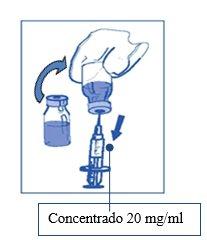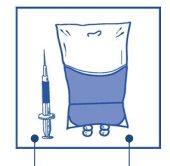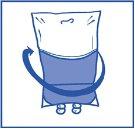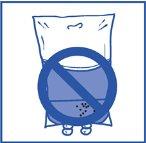
CABAZITAXEL ACCORD 20 mg/ml CONCENTRATE FOR INFUSION SOLUTION

How to use CABAZITAXEL ACCORD 20 mg/ml CONCENTRATE FOR INFUSION SOLUTION
Introduction
Package Leaflet: Information for the User
Cabazitaxel Accord 20 mg/ml concentrate for solution for infusion
cabazitaxel
Read all of this leaflet carefully before you start using this medicine because it contains important information for you.
? Keep this leaflet, you may need to read it again.
? If you have any further questions, ask your doctor, pharmacist, or nurse.
? If you experience any side effects, talk to your doctor, pharmacist, or nurse, even if they are not listed in this leaflet. See section 4.
Contents of the pack
- What is Cabazitaxel Accord and what is it used for
- What you need to know before you are given Cabazitaxel Accord
- How to use Cabazitaxel Accord
- Possible side effects
- Storage of Cabazitaxel Accord
- Contents of the pack and other information
1. What is Cabazitaxel Accord and what is it used for
The name of your medicine is Cabazitaxel Accord. Its common name is cabazitaxel. It belongs to a group of medicines called "taxanes", used to treat cancers.
Cabazitaxel Accord is used to treat adult patients with prostate cancer that has progressed after receiving other chemotherapy. It works by stopping the growth of cells and their multiplication.
As part of your treatment, you will also take a corticosteroid (prednisone or prednisolone) every day by mouth. Ask your doctor for information about this other medicine.
2. What you need to know before you are given Cabazitaxel Accord
Do not use Cabazitaxel Accord:
- if you are allergic (hypersensitive) to cabazitaxel, other taxanes, polysorbate 80, or any of the other ingredients of this medicine (listed in section 6),
- if your white blood cell count is very low (neutrophil count less than or equal to 1,500/mm3),
- if you have severe liver problems,
- if you have recently been or are going to be vaccinated against yellow fever.
Do not receive Cabazitaxel Accord if any of the above circumstances apply to you. If you are not sure, consult your doctor before receiving Cabazitaxel Accord.
Warnings and precautions
Before starting treatment with Cabazitaxel Accord, you will have blood tests to check that you have enough blood cells and that your kidneys and liver are working properly to receive Cabazitaxel Accord.
Tell your doctor immediately if:
- you have a fever. During treatment with Cabazitaxel Accord, it is more likely that your white blood cell count will decrease. Your doctor will check your blood and general condition to detect signs of infection. You may be given other medicines to keep your blood cell count up. People with low cell counts can develop life-threatening infections. The first sign of infection may be a fever, so if you have a fever, tell your doctor immediately.
- you have ever had any allergy. During treatment with Cabazitaxel Accord, severe allergic reactions can occur.
- you have severe or persistent diarrhea, feel unwell (nausea) or are being sick (vomiting). Any of these situations can cause severe dehydration. Your doctor should give you treatment.
- you have a feeling of numbness, tingling, burning, or decreased sensation in your hands and feet.
- you have any bleeding problems in your intestine or have changes in the color of your stools or stomach pain. If the bleeding or pain is severe, your doctor will stop your treatment with Cabazitaxel Accord. This is because Cabazitaxel Accord may increase the risk of bleeding or development of perforations in the intestinal wall.
- you have kidney problems.
- liver problems occur during treatment.
- you notice that the volume of your urine increases or decreases significantly.
- you have blood in your urine.
If any of the above circumstances apply to you, tell your doctor immediately. Your doctor may reduce the dose of Cabazitaxel Accord or stop the treatment.
Using Cabazitaxel Accord with other medicines
Tell your doctor, pharmacist, or nurse if you are using or have recently used other medicines, including those obtained without a prescription. This is because some medicines can affect the effectiveness of Cabazitaxel Accord or Cabazitaxel Accord may affect the effectiveness of other medicines. These medicines include:
- ketoconazole, rifampicin (for infections);
- carbamazepine, phenobarbital, or phenytoin (for seizures);
- St. John's Wort or hypericum (a medicinal plant used to treat depression and other problems);
- statins (such as simvastatin, lovastatin, atorvastatin, rosuvastatin, or pravastatin) (to lower cholesterol in your blood);
- valsartan (for high blood pressure);
- repaglinide (for diabetes).
While you are being treated with Cabazitaxel Accord, consult your doctor before getting vaccinated.
Pregnancy, breastfeeding, and fertility
Cabazitaxel Accord should not be used in pregnant women or women of childbearing age who do not use contraceptives.
Cabazitaxel Accord should not be used during breastfeeding.
Use condoms during sexual intercourse if your partner is or may become pregnant. Cabazitaxel Accord may be present in your semen and may affect the fetus. It is recommended not to father a child during and up to 6 months after treatment and to ask for information about sperm preservation before treatment, as Cabazitaxel Accord may alter male fertility.
Driving and using machines
During treatment with this medicine, you may feel tired or dizzy. If this happens, do not drive or use tools or machines until you feel better.
Cabazitaxel Accord contains ethanol (alcohol)
This medicine contains 1.185 mg of alcohol (anhydrous ethanol) per vial, which is equivalent to 16.33% by volume. The amount per dose of this medicine is equivalent to 30 ml of beer or 12 ml of wine.
It is unlikely that the amount of alcohol in this medicine will affect adults.
The alcohol in this medicine may alter the effects of other medicines. Consult your doctor or pharmacist if you are taking other medicines.
If you are an alcoholic, consult your doctor or pharmacist before taking this medicine.
3. How to use Cabazitaxel Accord
Instructions for use
Before receiving Cabazitaxel Accord, you will be given anti-allergic medicines to reduce the risk of allergic reactions.
- Cabazitaxel Accord will be administered by a doctor or nurse.
- Cabazitaxel Accord must be prepared (diluted) before administration. This leaflet provides practical information for the handling and administration of Cabazitaxel Accord for doctors, nurses, and pharmacists.
- Cabazitaxel Accord will be administered in the hospital through a drip (infusion) in one of your veins (intravenously) for approximately 1 hour.
- As part of your treatment, you will also take a corticosteroid medicine (prednisone or prednisolone) by mouth every day.
How much and how often it is administered
- The usual dose depends on your body surface area. Your doctor will calculate your body surface area in square meters (m2) and decide the dose you should receive.
- Usually, you will receive an infusion every 3 weeks.
If you have any further questions on the use of this medicine, ask your doctor, pharmacist, or nurse.
4. Possible side effects
Like all medicines, this medicine can cause side effects, although not everybody gets them. Your doctor will discuss this with you and explain the risks and potential benefits of your treatment.
Go to your doctor immediately if you notice any of the following side effects:
- fever (high temperature). This is very common (may affect more than 1 in 10 people).
- severe loss of body fluids (dehydration). This is common (may affect up to 1 in 10 people). This can happen if you have severe or persistent diarrhea, or fever, or if you have been vomiting.
- severe stomach pain or stomach pain that does not go away. This can happen if you have a perforation in your stomach, esophagus, or intestine (gastrointestinal perforation). This can be life-threatening.
If you experience any of the above circumstances, tell your doctor immediately.
Other side effects include:
Very common(may affect more than 1 in 10 people):
- reduction in the number of red blood cells (anemia), or white blood cells (which are important for fighting infections)
- reduction in the number of platelets (which results in an increased risk of bleeding)
- loss of appetite (anorexia)
- altered taste
- shortness of breath
- cough
- stomach upset, including nausea, vomiting, diarrhea, or constipation
- abdominal pain
- temporary hair loss (in most cases, hair grows back normally)
- back pain
- joint pain
- blood in the urine
- fatigue, weakness, or lack of energy.
Common(may affect up to 1 in 10 people):
- urinary tract infection
- low white blood cell count associated with fever and infections
- numbness, tingling, burning, or decreased sensation in hands and feet
- dizziness
- headache
- increased or decreased blood pressure
- stomach upset, heartburn, or belching
- stomach pain
- hemorrhoids
- muscle spasms
- frequent or painful urination
- urinary incontinence
- kidney problems
- mouth or lip ulcers
- infections or risk of infections
- high blood sugar levels
- low potassium levels in the blood
- mental confusion
- feeling of anxiety
- strange sensation or loss of sensation or pain in hands and feet
- ringing in the ears
- balance problems
- rapid or irregular heartbeat
- blood clots in the legs
- feeling of heat or flushing of the skin
- mouth or throat pain
- rectal bleeding
- red skin
- muscle discomfort, disorders, or pain
- swelling of feet or legs
- chills.
Uncommon(may affect up to 1 in 100 people):
- inflammation of the bladder, which can occur when your bladder has previously been exposed to radiation therapy (radiation recall cystitis).
Frequency not known(cannot be estimated from the available data)
- interstitial lung disease (inflammation of the lungs causing cough and difficulty breathing).
Reporting of side effects:
If you experience any side effects, talk to your doctor, pharmacist, or nurse, even if they are not listed in this leaflet. You can also report side effects directly through the national reporting system listed in Appendix V. By reporting side effects, you can help provide more information on the safety of this medicine.
5. Storage of Cabazitaxel Accord
Keep this medicine out of the sight and reach of children.
Do not use this medicine after the expiry date which is stated on the carton and vial label after EXP. The expiry date is the last day of the month stated.
This medicine does not require any special temperature conditions for storage.
Store in the original package to protect from light.
After opening the vial
Each vial is for single use only, and should be used immediately after opening. If not used immediately, the in-use storage times and conditions are the responsibility of the user.
After final dilution in the infusion bag/bottle
The chemical and physical stability of the infusion solution has been demonstrated for 8 hours at room temperature (15°C - 30°C) including the 1-hour infusion time and for 48 hours under refrigerated conditions including the 1-hour infusion time.
From a microbiological point of view, the infusion solution should be used immediately. If not used immediately, the in-use storage times and conditions are the responsibility of the user and normally should not exceed 24 hours at 2°C - 8°C, unless the dilution has been made in controlled and validated aseptic conditions.
Disposal
Disposal of the unused medicine and all materials that have been in contact with it should be done in accordance with local regulations. These measures will help protect the environment.
6. Container Contents and Additional Information
Composition of Cabazitaxel Accord
The active substance is cabazitaxel. One ml of concentrate contains 20 mg of cabazitaxel. Each 3 ml vial of concentrate contains 60 mg of cabazitaxel.
The other components are polysorbate 80, citric acid, and anhydrous ethanol (see section 2 "Cabazitaxel Accord contains alcohol").
Appearance ofCabazitaxel Accord and container contents
Cabazitaxel Accord is a concentrate for solution for infusion (sterile concentrate).
The concentrate is a clear, colorless to pale yellow or yellowish-brown solution.
It is presented as a single-use 6ml glass vial with an administrable volume of 3 ml of concentrate.
Package size:
Each box contains one single-use vial.
Marketing authorization holder
Accord Healthcare S.L.U
World Trade Center, Moll de Barcelona s/n,
Edifici Est, 6a planta, Barcelona,
08039 Barcelona, Spain
Manufacturer
Accord Healthcare Limited
Sage House, 319 Pinner Road
Harrow, Middlesex, HA1 4HF
United Kingdom
LABORATORI FUNDACIÓ DAU
C/ C, 12-14 Pol. Ind. Zona Franca,
Barcelona, 08040, Spain
Pharmadox Healthcare Ltd.
KW20A Kordin Industrial Park
Paola, PLA 3000
Malta
Accord Healthcare Polska Sp. z o.o.,
ul. Lutomierska 50, Pabianice, 95-200
Poland
Accord Healthcare B.V
Winthontlaan 200, UTRECHT, 3526KV Paola
Netherlands
Date of last revision of this prospectus: {MM/YYYY}
Other sources of information
Detailed information on this medicinal product is available on the European Medicines Agency website: http://www.ema.europa.eu.
The following information is intended for healthcare professionals only.
PRACTICAL INFORMATION FOR DOCTORS OR HEALTHCARE PROFESSIONALS ON THE PREPARATION, ADMINISTRATION, AND HANDLING OF CABAZITAXEL ACCORD 20 mg/ml CONCENTRATE FOR SOLUTION FOR INFUSION
This information complements sections 3 and 5 for the user.
It is essential that you read the entire content of this procedure before preparing the infusion solution.
Incompatibilities
This medicinal product must not be mixed with other medicinal products except those used for dilutions.
Shelf-life and special precautions for storage
For the packaging of Cabazitaxel Accord 20 mg/ml concentrate for solution for infusion
This medicinal product does not require special temperature conditions for storage.
Store in the original packaging to protect from light.
After opening the vial
Each vial is for single use and must be used immediately after opening. If not used immediately, the in-use storage time and conditions are the responsibility of the user.
After final dilution in the infusion bag/bottle
The chemical and physical stability of the infusion solution has been demonstrated for 8 hours at room temperature (15°C - 30°C) including 1 hour infusion time and for 48 hours under refrigerated conditions including 1 hour infusion time.
From a microbiological point of view, the infusion solution should be used immediately. If not used immediately, the in-use storage times and conditions are the responsibility of the user and normally should not exceed 24 hours at 2°C - 8°C, unless the dilution has been made under controlled and validated aseptic conditions.
Precautions for preparation and administration
As with other antineoplastic agents, it is recommended to handle the preparation and administration of Cabazitaxel Accord solutions with caution, taking into account the use of safety devices, personal protective equipment (e.g., gloves), and preparation procedures.
If, at any stage of preparation, Cabazitaxel Accord comes into contact with the skin, wash immediately and thoroughly with water and soap. If it comes into contact with mucous membranes, wash immediately and thoroughly with water.
Cabazitaxel Accord should only be prepared and administered by personnel trained in the handling of cytotoxic agents. Pregnant healthcare workers should not handle it.
Preparation steps
NEVER use with other medicinal products containing cabazitaxel at different concentrations. Cabazitaxel Accord contains 20 mg/ml of cabazitaxel (administrable volume of at least 3 ml).
Each vial is for single use and must be used immediately. Any unused solution must be discarded. More than one vial of Cabazitaxel Accord may be required to administer the prescribed dose.
The dilution process to prepare the infusion solution must be carried out aseptically.
Preparation of the infusion solution
Step 1 Aseptically withdraw the required volume from the Cabazitaxel Accord vial (containing 20 mg/ml of cabazitaxel) using a graduated syringe fitted with a fixed needle. For example, a dose of 45 mg of cabazitaxel would require 2.25 ml of Cabazitaxel Accord. |
|
Step 2 Inject into a sterile non-PVC container of 5% glucose solution or 9 mg/ml (0.9%) sodium chloride solution for infusion. The concentration of the infusion solution should be between 0.10 mg/ml and 0.26 mg/ml. |
|
|
|
|
Step 4 As with all parenteral products, the resulting infusion solution should be inspected visually before use. Since the infusion solution is supersaturated, it may crystallize over time. In this case, the solution should not be used and should be discarded. |
|
The infusion solution should be used immediately. Refer to the sections on shelf-lifeand special precautions for storageabove.
Disposal of unused medicinal product and all materials that have come into contact with it should be carried out in accordance with local regulations.
Method of administration
Cabazitaxel Accord is administered as an infusion over 1 hour.
The use of an in-line filter with a 0.22 micrometer nominal pore size (also known as 0.2 micrometers) is recommended during administration.
PVC infusion bags or polyurethane infusion sets should not be used for the preparation and administration of the infusion solution.
- Country of registration
- Active substance
- Prescription requiredYes
- Manufacturer
- This information is for reference only and does not constitute medical advice. Always consult a licensed doctor before taking any medication. Oladoctor is not responsible for medical decisions based on this content.
- Alternatives to CABAZITAXEL ACCORD 20 mg/ml CONCENTRATE FOR INFUSION SOLUTIONDosage form: INJECTABLE INFUSION, 20 mgActive substance: cabazitaxelManufacturer: Eugia Pharma (Malta) LimitedPrescription requiredDosage form: INJECTABLE PERFUSION, 60 mgActive substance: cabazitaxelManufacturer: Reddy Pharma Iberia S.A.Prescription requiredDosage form: INJECTABLE PERFUSION, 10 mg/mlActive substance: cabazitaxelManufacturer: Ever Valinject GmbhPrescription required
Alternatives to CABAZITAXEL ACCORD 20 mg/ml CONCENTRATE FOR INFUSION SOLUTION in other countries
The best alternatives with the same active ingredient and therapeutic effect.
Alternative to CABAZITAXEL ACCORD 20 mg/ml CONCENTRATE FOR INFUSION SOLUTION in Poland
Alternative to CABAZITAXEL ACCORD 20 mg/ml CONCENTRATE FOR INFUSION SOLUTION in Ukraine
Online doctors for CABAZITAXEL ACCORD 20 mg/ml CONCENTRATE FOR INFUSION SOLUTION
Discuss dosage, side effects, interactions, contraindications, and prescription renewal for CABAZITAXEL ACCORD 20 mg/ml CONCENTRATE FOR INFUSION SOLUTION – subject to medical assessment and local rules.










